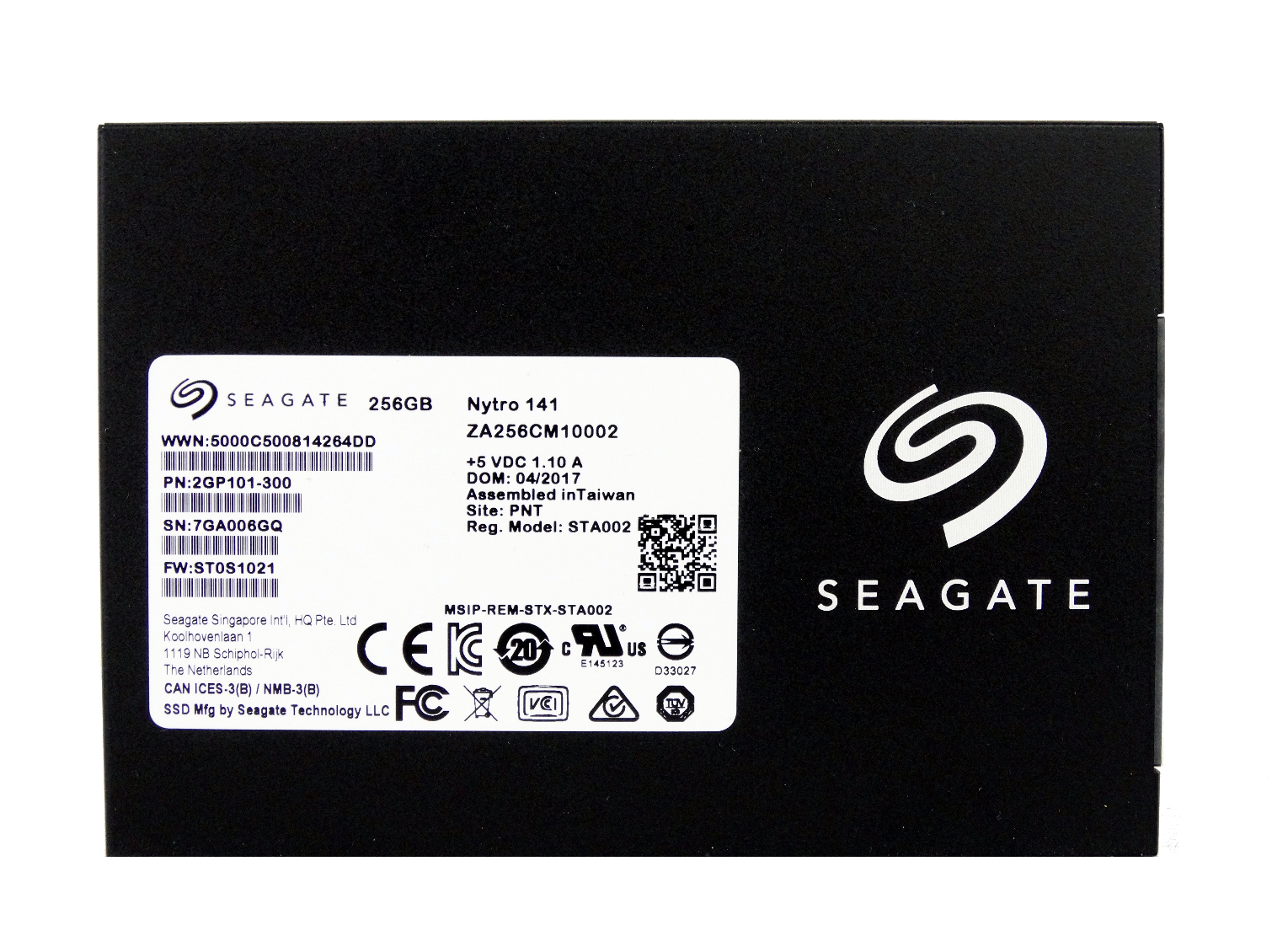Seagate Nytro 141 Client SSD Review
Why you can trust Tom's Hardware
Conclusion
It's nice to see Seagate back in the flash business, even under these circumstances. Internal changes we've tracked within Seagate lead us to believe more flash-based products will come in the future. Seagate is so far behind the flash curve that we wonder if it will ever recover.
I frowned on the company's first attempt to bring a consumer SSD to market. Seagate's 600 had the exact hardware configuration that Corsair had released eleven months earlier in the Neutron GTX. The 600 wasn't a remarkable success even though it delivered decent performance for the time. The three-year warranty, early adoption of 19nm flash, and the high price kept enthusiasts from selecting the drive over the SandForce products that flooded the market. Seagate now owns the remains of SandForce, but it has yet to release the 3000 series.
The Seagate Nytro 141 has issues that the company will need to address. The reboot issue isn't that rare. Other companies had similar issues in the past and fixed the problem with a simple firmware update. The problem stems from Seagate owning the Nytro 141 after its release to the channel. This could really hurt Seagate in the long run because the bug likely impacts several types of laptops. The Nytro 141 didn't have the same issue on our desktop systems.
Computer Upgrade King lists the 256GB for $89, which is a very low price for an SSD with a DRAM buffer. Similar SSDs cost a bit more, but the Nytro 141 sells for DRAMless SSD prices. Products like this tend to go viral. We've seen it with several Samsung gray market SSDs that outperformed products with similar pricing. There are not enough Nytro 141 drives available for that to happen this time, but we expect this drive to sell out quickly.
Seagate released a "best-fit" list of use cases for the Nytro 141 in the cost-competitive full capacity configuration. The list includes workstation and personal computers. After our testing, we would like to make a more specific list. The drive isn't an excellent performer under heavy workloads and the low sequential write speed compared to SSDs with newer 3D memory technology will not be attractive to gamers that store more than 50GB. The Nytro 141 fits best in a light use computer system used to play more mainstream games, surfing the web, checking email and other office tasks. It's a general use SSD for typical applications and activities. The Nytro 141 is boring on the surface, but those mundane tasks represent the typical user's workload. If the Nytro 141 had a higher price we would steer shoppers back to the 850 EVO, but the Nytro undercuts the EVO by enough to make it a viable option for cost-conscious shoppers.
MORE: Best SSDs
MORE: How We Test HDDs And SSDs
Get Tom's Hardware's best news and in-depth reviews, straight to your inbox.
MORE: All SSD Content

Chris Ramseyer was a senior contributing editor for Tom's Hardware. He tested and reviewed consumer storage.
-
kalmquist The conclusion may have been valid at 6 AM this morning when this story was posted, but now the 850 EVO 250GB is $90 plus $3 shipping, while B&H Photo has it for $90 with free shipping. The best value, based on the charts in this review, is the Sandisk Ultra II for $85, which outperforms the Nytro 141 reviewed here while costing $5 less.Reply
The Nytro drive, being aimed at an enterprise customer, may have been designed with the intention of providing above average reliability, but even if that was the intent, there is no way to know whether they succeeded. With Sandisk and Samsung, the companies have a long and successful track record in the SSD market, and the specific models have been out for some time. -
Kewlx25 Reply20141194 said:More TLC c*rap, no thx.
The industry has been teasing some QLC that would give 100x the storage with 1/100th the endurance. If you had the choice between a 1TiB drive with 1,000 wear levels or a 100TiB drive with 10 wear levels, which would you rather have? They both can handle the same amount of total data written, but one is larger. -
Kahless01 "sir the chart goes up to 600 but everything is between 480 and 550 and all the lines are laying on top of each other so you cant differentiate between them."Reply
"not my problem. lots of dead space is good for the soul"
can we get them to where only the relevant portions of a graph show or are we going to continue playing stupid games? -
takeshi7 Reply20143408 said:"sir the chart goes up to 600 but everything is between 480 and 550 and all the lines are laying on top of each other so you cant differentiate between them."
"not my problem. lots of dead space is good for the soul"
can we get them to where only the relevant portions of a graph show or are we going to continue playing stupid games?
Every good graph starts at the zero axis. If the results are close together on the graph, they are close together in real life.
-
hannibal Yep. It tell that products Are equally good. I hate graphic that only tells the good part of the product aka lies!Reply
